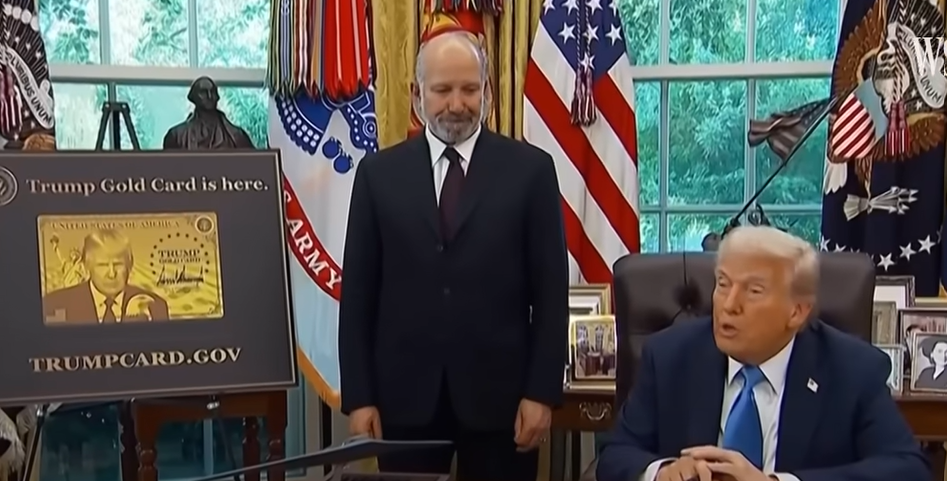Similar to bees pollinating new fields, the H1B program has long served as a talent gateway, enabling engineers, scientists, and specialists to revolutionize industries. That gate was transformed into a toll booth by Trump’s declaration that each application would cost $100,000, which is so steep that many businesses consider it to be unaffordable. The stage is now set for a legal battle that could redefine not only immigration but also America’s role as a hub for innovation, as lawyers, economists, and immigrant advocates quickly foresaw lawsuits.
In the past, businesses allocated about $10,000 for the legal and administrative expenses associated with an H1B visa. Businesses are now forced to reconsider who they sponsor because the additional surcharge multiplies that by almost ten. According to economists, a worker would need to make roughly $225,000 a year to break even on a three-year visa. Even though companies like Google or Amazon can defend such salaries for some of their employees, most applicants typically make much less than that, so a sizable section of the talent pool is immediately left out.
H1B Visa Program – Key Profile
| Category | Details |
|---|---|
| Program Name | H-1B Visa (Specialty Occupations) |
| Created | 1990 (Immigration Act) |
| Administered By | U.S. Citizenship and Immigration Services (USCIS) |
| Purpose | To allow U.S. employers to hire foreign workers in specialized fields such as technology, medicine, finance, and academia |
| Annual Cap | 65,000 visas, plus 20,000 for advanced degree holders |
| Typical Duration | 3 years, renewable up to 6 years |
| Common Industries | Technology, healthcare, engineering, finance, academia |
| Recent Change | $100,000 fee per new application imposed by Trump administration (Sept 2025) |
| Controversy | Lawsuits argue the fee is unlawful, excessive, and economically damaging |
| Reference | Reuters – H1B Lawsuit Explainer: https://www.reuters.com/legal/government |

The pressure is demonstrated by data from Amazon itself. Just 4% of its 21,600 H1B postings from the previous year exceeded the break-even point. Despite applying for almost 10,000 positions, Tata Consultancy Services, which primarily relied on mid-tier H1B hires, did not surpass the $225,000 threshold. Practically speaking, this fee does more than simply reduce the number; it also changes who has access, giving preference to elite workers over the larger professional class.
The U.S. Chamber of Commerce has already raised the possibility of legal action, claiming that the fee is not only excessively high but also possibly illegal. Although USCIS is authorized by immigration law to impose fees linked to program expenses, there is no precedent for an executive order that demands a six-figure sum in one go. The 2018 Supreme Court case Trump v. Hawaii, which upheld a travel ban on national security grounds, is cited by scholars, but they emphasize that the economic argument may not have the same legal weight in this case.
This leads to a “remarkably unclear” situation, according to attorneys. Businesses are left wondering if those who are currently in possession of a visa and change employers, or who travel overseas and return, will be charged the same amount. Immigration attorneys caution that these ambiguities may bolster claims that the policy is capricious. Companies like Google have recently told workers overseas to return immediately, illustrating how even big businesses must deal with legal uncertainty.
It is impossible to ignore the social fabric that is entwined with this issue. Foreign-born professionals with college degrees make up nearly 3% of the American workforce; one in four scientists and one in five programmers are immigrants. If this stream is restricted, it could deplete fields that are already having difficulty meeting domestic demand. Universities that hire foreign faculty or hospitals that rely on H1B physicians may be especially at a disadvantage, which would limit innovation and the provision of public services.
Additionally, there is the emotional story—the human side of prospective employees who view the H1B as a means of achieving stability and belonging rather than just as a piece of paperwork. The visa, which frequently leads to a green card, has represented a doorway to opportunity, particularly for Chinese and Indian professionals. For many, that path’s sudden change into an expensive gamble feels like a rejection of their goals. There are reports of brilliant engineers whose futures are on hold because their employers are unable to pay the six-figure fee.
Identity politics are involved in this conflict in addition to economics. Proponents of the policy argue that the fee protects domestic labor and point to American graduates who feel priced out of tech jobs. Critics respond by citing CEOs who demonstrate how immigrant talent can propel businesses into global leadership, such as Sundar Pichai and Satya Nadella, both of whom were once H1B holders. America runs the risk of destroying the very pipeline that has produced the leaders who now influence digital life and commerce by restricting access.
The analogy to free agency in sports is remarkably similar. Similar to how only affluent teams are able to sign elite athletes, the new H1B system benefits companies with enormous financial resources. Startups and smaller businesses, which are frequently the birthplace of disruptive innovation, are ignored. Hollywood would rapidly lose its international diversity if it only hired actors who could afford to pay a $100,000 upfront fee. The dynamism that has long characterized Silicon Valley’s creative engine may also disappear.
The action fits in well with Trump’s political branding, which emphasizes America first and appeals to voters who are worried about wage pressure. However, the lawsuits contend that in reality, it runs the risk of fostering inefficiency rather than equity. By making the cost barrier so high, the program filters out skilled workers rather than attracting a large pool of them, which may lower competitiveness across a number of industries.

